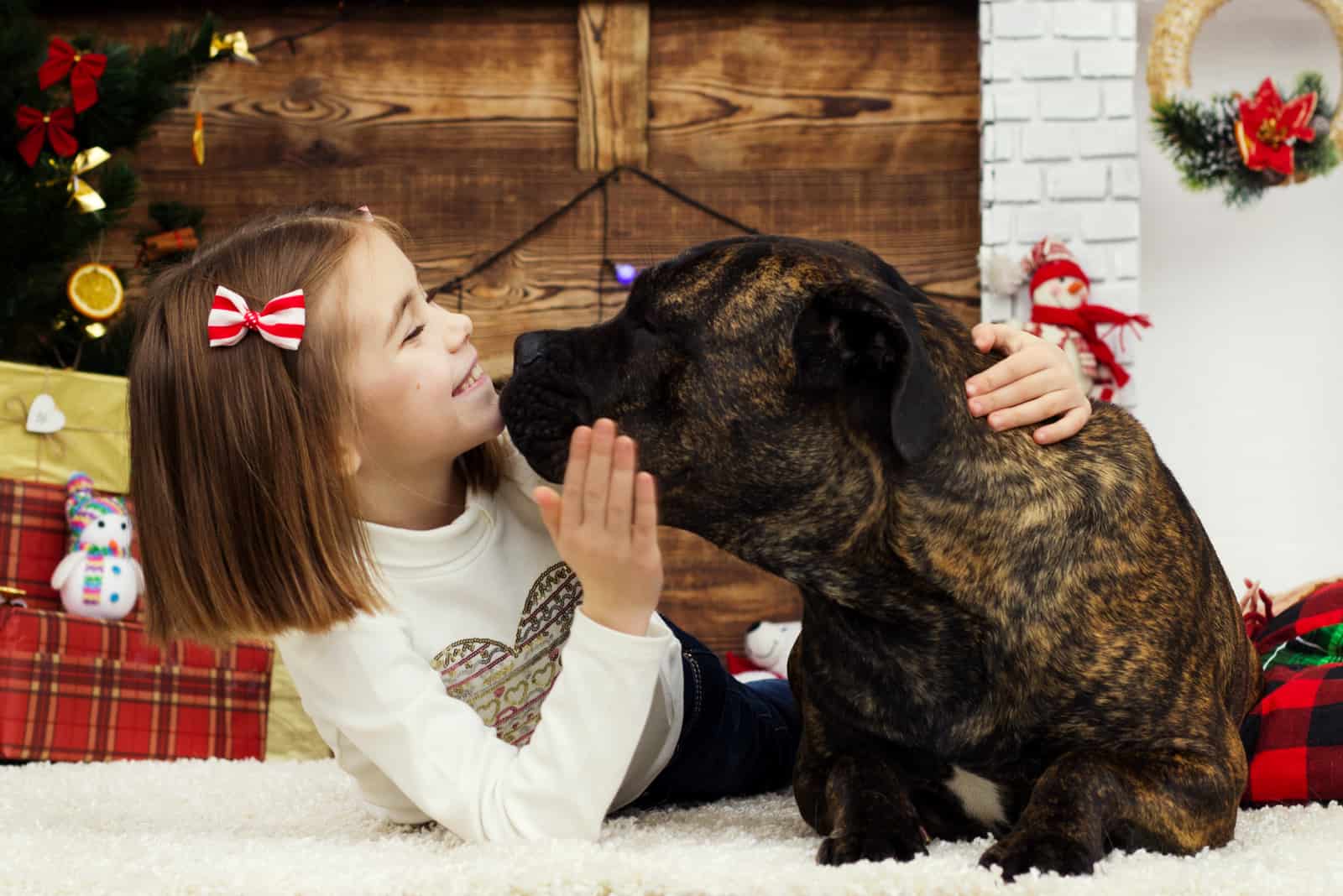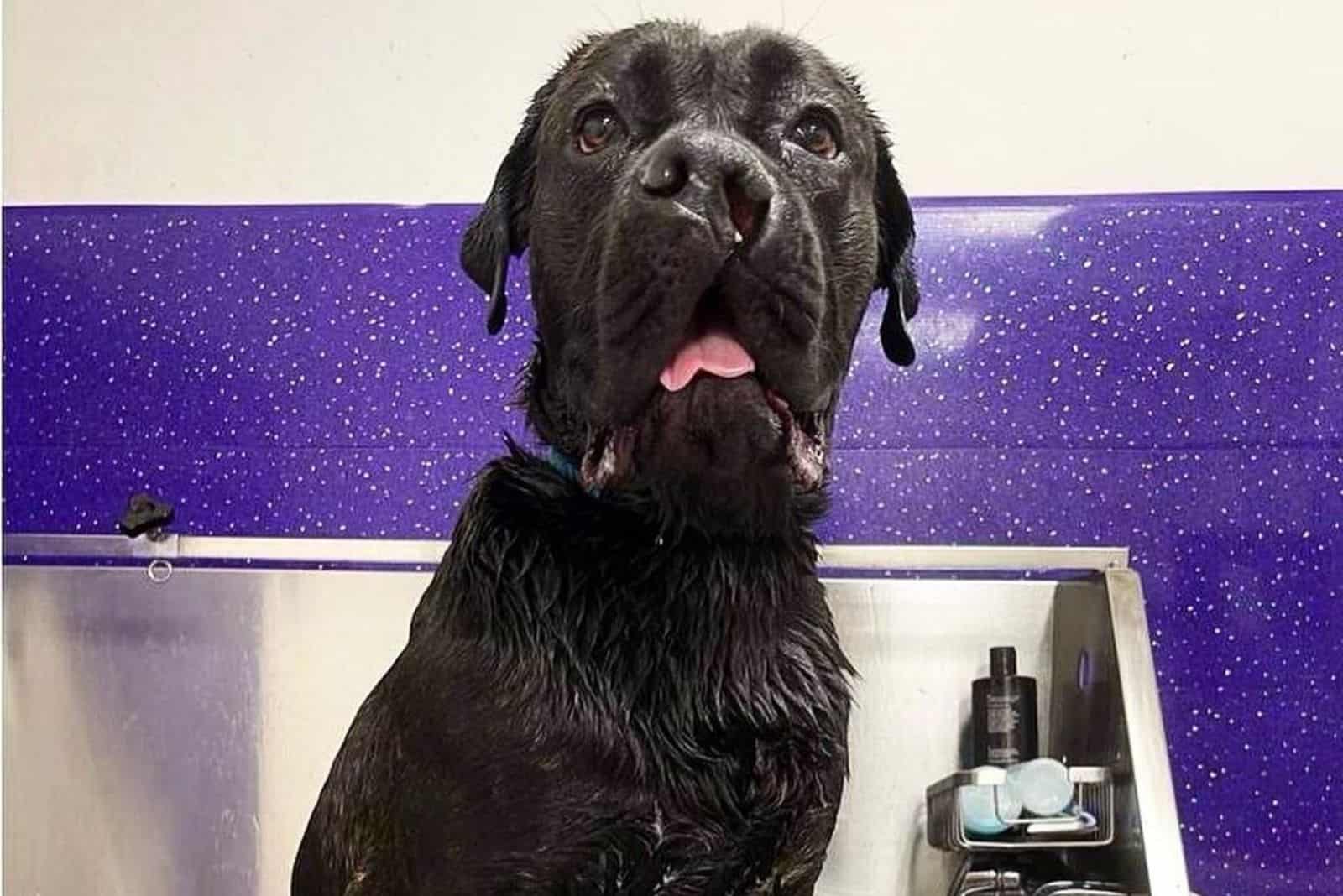When you’re an animal lover with allergies, it’s tough to find the right dog breed that won’t make your eyes water, your skin itch, or worse. You end up asking many questions, and one of them is, Are Cane Corsos hypoallergenic?
Unfortunately, no, Cane Corsos aren’t. It’s hard to find a hypoallergenic dog breed in general, especially if it’s the dog’s saliva that you’re allergic to and not their hair.
The American Kennel Club seems to agree, as they don’t have the Cane Corso breed listed as hypoallergenic on their list.
It’s not the saliva that’s the problem either, but danders. Despite being a short hair dog breed, Cane Corsos shed very aggressively twice a year.
Danders can cause varying levels of allergic reactions in many people who suffer from allergies, but don’t fret – they can be controlled.
Once you have it in check, you and your family can enjoy the company of this significant and lovely Mastiff.
So, if the Cane Corso is the dog breed you’ve decided on, read on to learn more about how the spread of danders can affect you or a family member living with you.
You’ll also learn how to groom your dog to reduce the spread of danders properly.
Are Cane Corsos Hypoallergenic Dogs?
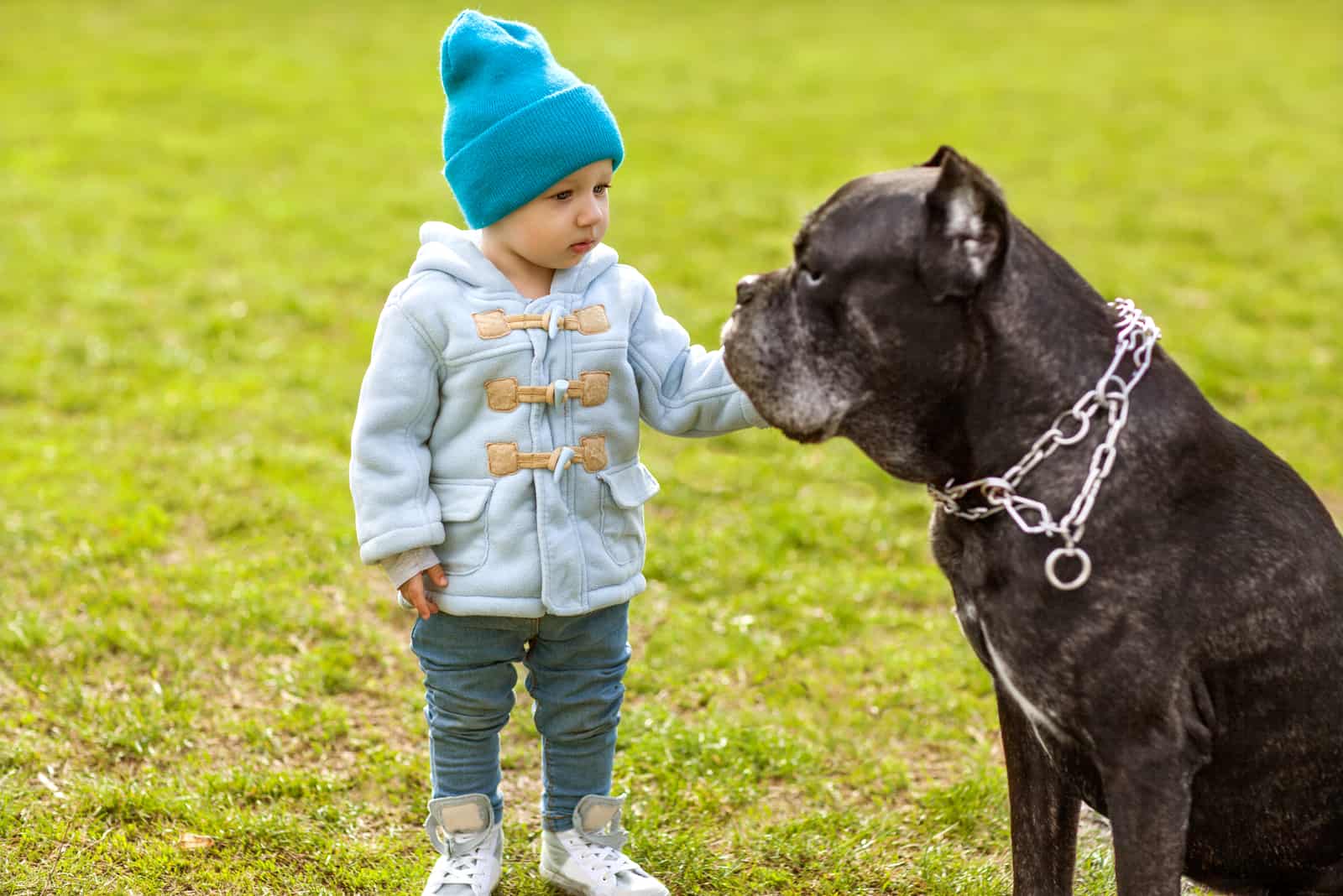
We usually correlate a dog breed as being prone to allergen spread when they either have long hair or drool a lot.
The Cane Corso dog doesn’t have either of these issues, yet they aren’t considered hypoallergenic.
While we’ve already answered this question, it’s time to delve a little bit into that to rationalize it better.
The saliva that the Cane Corso dog spreads around isn’t excessive, nor does it possess many allergens.
The hair isn’t the most significant issue either. The danders from the dog are, as they can cause an unwanted allergic reaction to known allergy sufferers.
But what are danders?
Dander is a form of dandruff, tiny flakes of dead skin that come from animals with hair, fur, feathers, or even humans, albeit not from the scalp itself. They are epithelial skin cells.
The flakes of dead skin aren’t as big of an issue throughout most of the year, though, only during shedding season.
They shed aggressively twice a year, which can cause mild to moderate allergic reactions in people with sensitive immune systems that specifically respond to dog allergies.
It’s a brief period sometime in Autumn and Spring where they shed most of their hair to leave room for a fresh new coat to grow out.
All this hair will get everywhere, and they’re such tiny strands that it’ll be hard to pick them up individually.
But again, it’s not the hair itself that’s the problem, but the dander, the dead pieces of the dog’s skin that are attached to it.
These danders can then spread and be inhaled, swallowed, or make contact with the skin, causing varying reactions within the body.
What causes that, you may ask? It’s a protein secreted in the dry skin that triggers these reactions in the first place.
Some dogs have a higher concentration, making it a higher allergen risk. In contrast, some have less, but it’s usually present regardless of dog breed.
Urine is a third potential cause of allergies, caused by the same protein found in the flakes of skin.
But if your dog has gone through proper socialization and obedience training, encountering their urine around the house should really not be an issue.
How To Reduce The Impact Of Danders
Photo from: @tysonmillz_canecorso
So, the question now switches from Are Cane Corsos hypoallergenic? to How can I reduce the impact of danders? and the answer is through proper grooming techniques that help control the spread of hair and allergens simultaneously.
Brush them often
The first and simplest tip is to regularly brush the dog’s coat to catch most of the hair with the brush itself away from your furniture and carpets.
If possible, brush your dog outside so no stray hairs end up contaminating your home to avoid allergic reactions as best you can.
The less hair there is, the fewer potential health problems there’ll be.
It’s not just about catching the hair in time, though. Regular brushing triggers the natural oils secreted in the body.
These oils, much like the ones in our skin, help keep the body moisturized, reducing the amount of danders produced from dry skin.
Brushing, in turn, also reduces the potential health issues that you may have with the dry skin flakes lingering in the air.
Get the right brush
Any old brush won’t do the trick, though. As we’ve said before, Cane Corsos have a relatively short coat, even during the winter when their hair gets a bit thicker.
For that reason, you want to get a slicker brush. It’ll agitate the dog’s skin a lot less than a coarse brush would while still getting all the loose, shed hairs off your best friend.
Your dog will be a lot happier for it, too, and will be less prone to scratching himself and spreading the allergen around.
Use the proper technique
Of course, the key to proper grooming isn’t just the brush itself or the frequency of grooming, but the technique.
The best way to brush a short coat is to brush in the direction of the hair’s growth.
While brushing against the coat is more effective, it ends up irritating the dog’s skin, which leads to the need to scratch and the increase in dander production.
As important as minimizing the allergy risk is, your dog’s comfort is paramount; otherwise, you’d be better off without one.
As much as we promote the friendship between small and large dogs with their owners, the truth remains that a pet is a big responsibility, especially big dogs who need a lot of room and maintenance.
Dog lovers have to make sacrifices, and they have to meet the dog’s needs as well as their own.
Baths are important
Regular brushing may be important, but giving your dog baths often is just as crucial to keeping the hair and dead skin out of the allergic persons’ vicinity.
Quality is important here, too, and getting a shampoo that suits your dog will help both you and him out in the long run.
Your big Pitbull look-alike will be happy to be clean and will need to scratch a lot less while you get a more pleasant-smelling home that’s easier to breathe in.
Good shampoos will also help stimulate the body’s production of natural oils like brushing does, further helping keep the dry skin flakes out of the air while also rinsing them away in the suds.
The best food for the best dog
Skin health isn’t reliant on just hygiene. Diet plays a big role in it too.
With the right food regimen, you can keep your dogs’ coat shiny and his skin healthy all at the same time. Cans of dog food aren’t filled with buzzwords for show, after all.
Diet differs from dog to dog, and we suggest consulting your local pet nutritionist, veterinarian, or any other qualified practitioner on the matter.
Let them construct a meal plan to minimize the spread of allergens and optimize your dog’s overall health, and everything will be as right as rain.
This does mean that cheap food won’t cut it most of the time and that you might have to increase the food budget for the family dog and get him some high-quality meals.
That said, all these little things add up and are worth it in the end for both parties.
The standard stuff recommended for large breed dogs like the Cane Corso are supplements of omega-3 oils and fatty acids.
Foods containing these nutrients will help stimulate the production of the natural oils mentioned above and keep your dog nice and cozy while keeping the rest of the family healthy.
What Does Hypoallergenic Mean?
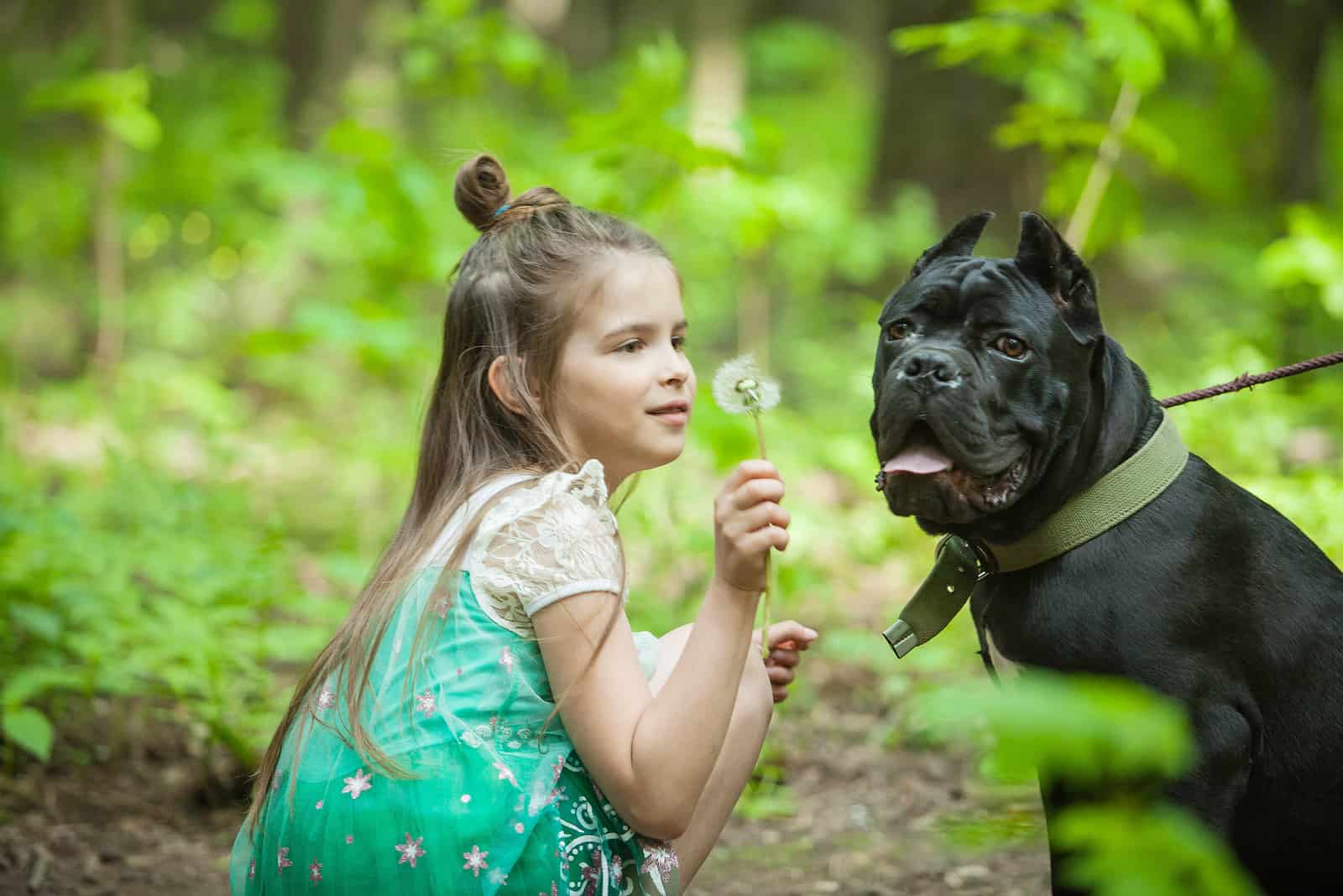
You’ve likely encountered the term before. To be hypoallergenic in terms of pets means the pet itself won’t trigger an allergic reaction, or the reaction will be very mild to the point where one won’t need to take any medication to be around them.
Rarely do giant breeds of dogs ever fall into this category, considering the surface area of their fur, with the exception of the Afghan hound.
It’s usually reserved for small dogs who don’t really occupy a lot of space and because their shedding periods are very infrequent.
For dogs, it basically means a dog who doesn’t drool, who’s housetrained to not urinate around the house, and one who rarely sheds.
Unfortunately, Cane Corsos don’t fit the bill even with their short coat, thanks to their biannual aggressive shedding.
If you have serious allergy issues, dogs like Schnauzers, Poodles, Portuguese Water Dogs, and the like might be a better option, but if your allergy troubles are mild to moderate, a Cane Corso can still be the ideal buddy for you.
Why Dogs Shed Their Fur
While this is a question that most dog owners know the answer to, we feel like it’s worth clarifying regardless.
Dogs go through a shedding process to help regulate body temperature, going from a thicker coat to a thinner one to adjust to the hotter summer temperatures and vice versa.
This is because dogs don’t sweat as much as humans do, meaning it’s harder for them to regulate their body heat naturally.
It’s why you see the larger dogs panting more often to help expel hot air.
So do forgive them for this tiny little inconvenience; they’ll return it with loyalty and unending devotion.
Why You Should Get A Cane Corso Regardless
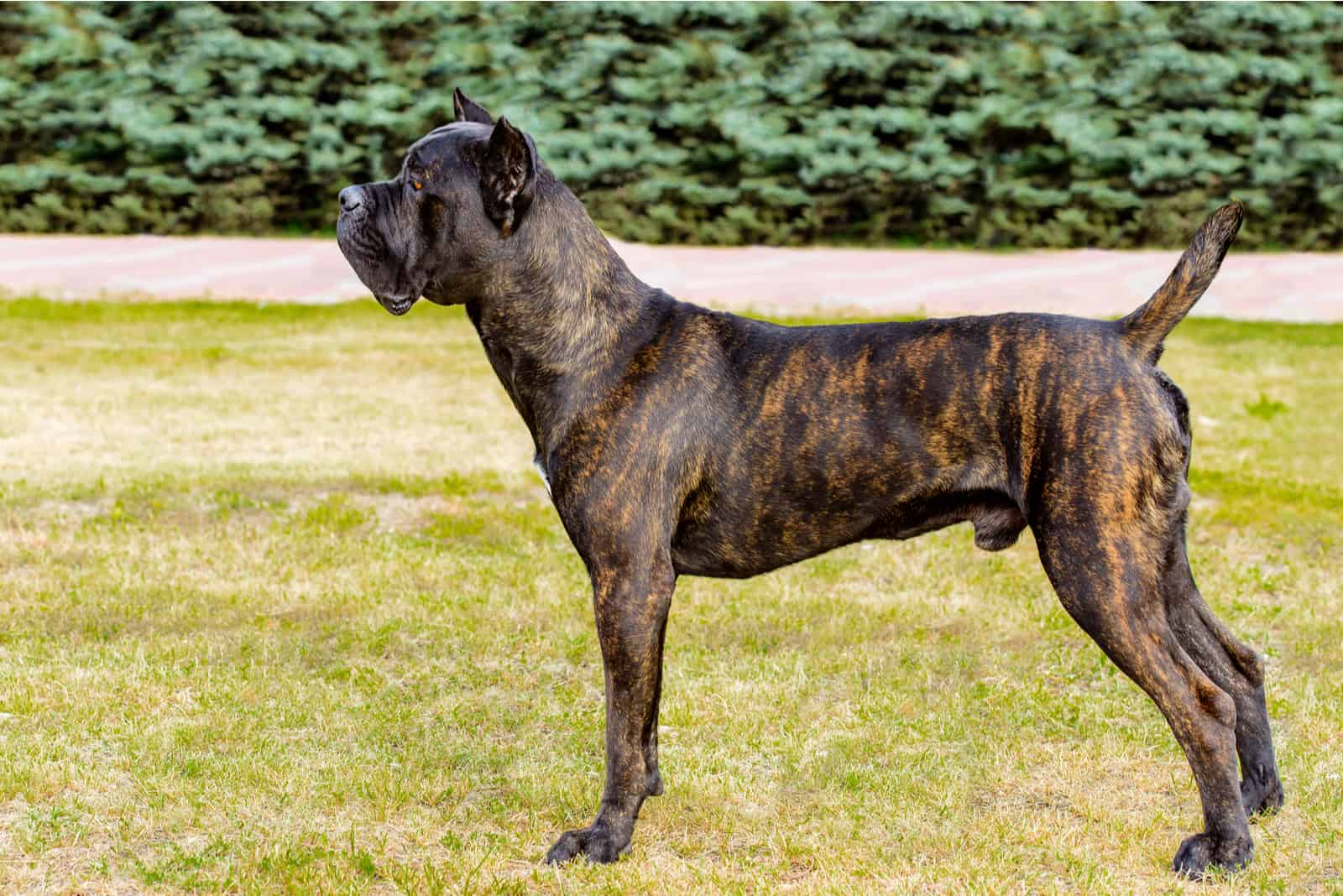
Seeing as this is still an article on Cane Corsos, I do wholeheartedly want to recommend them as, while sometimes stubborn, their trainability is quite high.
History
The reason for the Cane Corso temperament being so calm comes from their roots.
The breed descended from Roman war dogs called Canis Pugnaces way back in 5th century Italy.
They were fiercely loyal with a high energy level, allowing them to endure long skirmishes and treks, meaning they required a lot of mental stimulation and exercise.
Later on, this stamina was used in the field where they were used as working dogs or for herding livestock.
In the present day, some of them still perform those duties, albeit less with the breeding of proper shepherd dogs. Instead, they’re now used more as guard dogs and watchdogs due to their powerful build.
Popular Cane Corso mixes
As time passed, through the selective breeding process chosen by breeders, we arrived at the Italian Mastiff we have today, as well as his close relative, the Neapolitan Mastiff.
A few mixed breeds of Cane Corso came about, too, like the Pitbull mix, the Pitcorso, and the Rottweiler mix, the Rotticorso.
One that’s especially popular nowadays is the mix with the Blue Blood Bulldog, the Blue Blood Cane Corso.
Coat Colors
While you can’t really change the answer to the question, Are Cane Corsos hypoallergenic? you can choose the color of their coat, and they have a variety of options.
The most common ones are black and gray with brindle variations. There are also fawn and red coat colors, which are a bit rarer, and the chestnut brindle with a few other variations like chocolate that are quite rare and tend to cost more.
The price
According to the AKC list of Cane Corso dog breeders, the price of a Cane Corso puppy varies from around $1,800 to $3,000, a massive amount of money that you need to be prepared to part with, alongside the maintenance costs that come with it.
This is why we say to only decide on getting a dog once you’re fully committed since not a lot of households can afford the extra expenses and responsibility.
Lifespan
The sad part about Cane Corsos is that they live relatively short lives, somewhere between 9–12 years.
Sadly, they suffer from the same issues that most big breeds of dogs do, like hip dysplasia, which occurs with age, and gastric dilatation-volvulus (GDV), also known as bloat in dogs, which can be fatal if not treated immediately.
In Conclusion
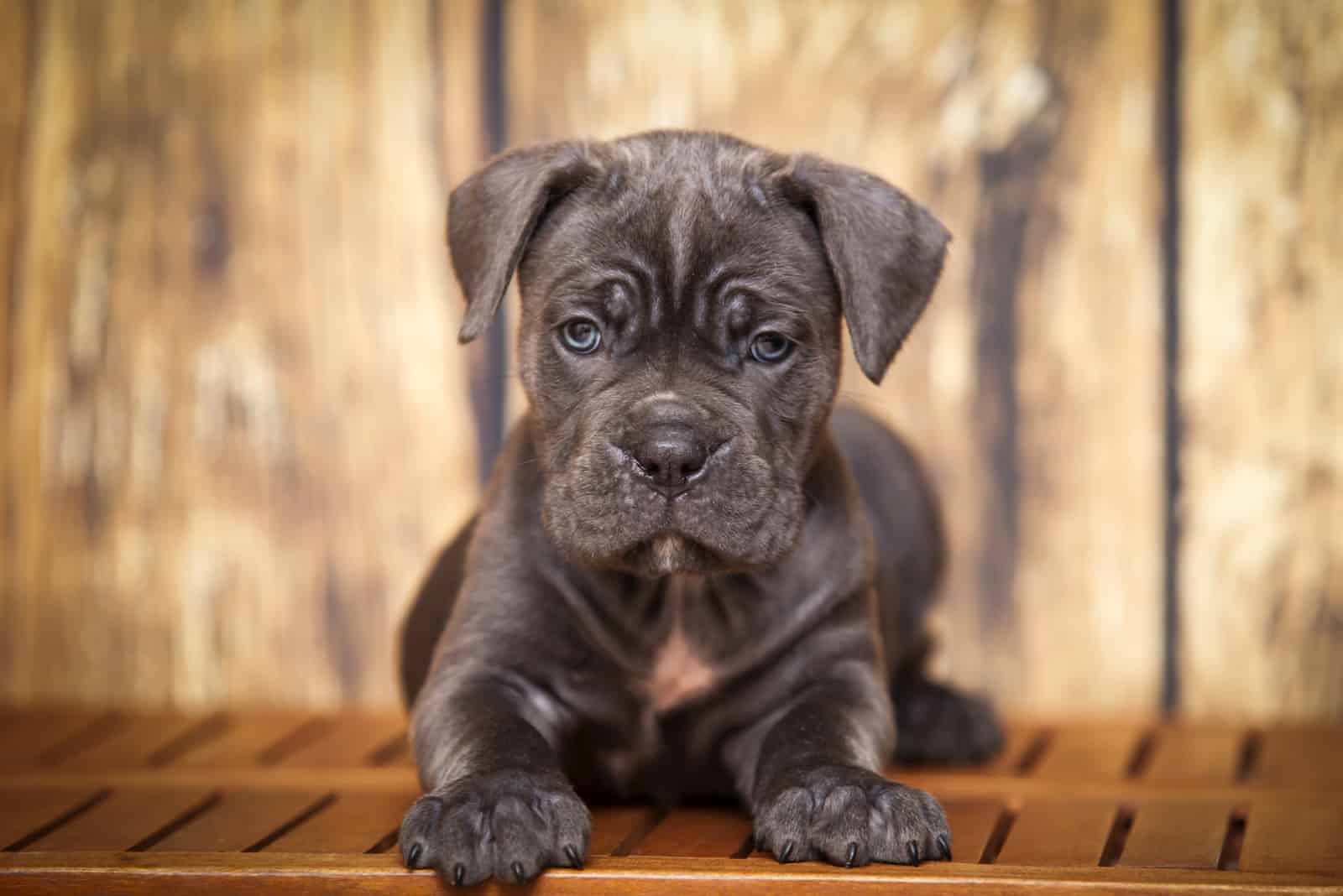
While the sad answer to the question Are Cane Corsos Hypoallergenic? was a no, people with moderate or mild allergy issues can still get one as a pet if they take proper care of it.
Helping minimize the risk of allergies through proper grooming will improve both your own quality of life and your dog’s, ensuring a great time for the two of you.
I do advise speaking with your own doctor on the matter before you get one to ensure that a potential allergic reaction won’t cause serious health problems for you.
Once you have that cleared up, you should be good to go.
Keep in mind that they’re big dogs that require a lot of attention, but we believe that you’ll know what to do and be the perfect owner for your new best friend.
